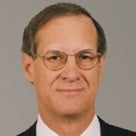There is much talk and to do about Basel III and capital ratios of banks. Is 7% or 9% the right number, or should it be even higher. The reality is the ratio is really not the issue. It is the definition of what is accepted as capital and to what haircut for Tier I capital. The ratio could be 5% if the definitions were strict or 15% if they are weak. Here is an example. CMBS bonds can be counted if they are ranked AAA, even though we all know that CMBS AAA is not really AAA in the strict sense. We all saw what happened to the bond prices in 2009. We saw downgrades. We see Greek sovereign debt really being in default even though the EU is going to craft a make believe refinancing that will let everyone claim there has not been a default. You get the idea. So clearly cash deposits are real, where the definition of risk adjustment on any given security is a political one being made to assure that the truth about many European banks is once again hidden and the can is kicked further down the road of hope for better times.
The major US banks have been building capital and most are probably over capitalized compared to the regulatory requirements. Bank of America is the outlier because when they took over Countrywide they cut a terrible deal. Ken Lewis should have done what Jamie Dimon did when he took over Bear, and gotten some loss backstop. Although he was essentially forced to buy Countrywide by the government and the Fed, he should have pushed back much harder and gotten the backstop. That deal badly damaged the bank for many years as we see now. TARP for some banks like JP Morgan, who did not need the cash but were forced to take it, was actually a profit windfall. They were able to take the excess $25 billion and make a spread when there was no loan demand, and at least they made added profits which let them build reserves that they can now release to support current earnings.
The point of all this being that the major banks are now in fine shape for the most part, and are well able to lend if there was serious demand for lending, which there is not yet. The banking system was saved, even though it was done by further consolidating the industry and creating even greater too big to fail risk. Now the real issue is to put in place real risk adjustment definitions so that Tier I is real capital and it is measured objectively for the next crisis. While it is highly unlikely the major banks will soon again be at any real risk of failure, like Wachovia or Countrywide, we need to never let that occur again. I am not advocating the push for lots of useless regulation which Dodd Frank is attempting. That is way over board and will do more damage than it does good. I am asking for what Jamie Dimon is asking- sensible, well considered changes that do not levy big burdens on the lenders to the point that they are profit constrained and are unwilling to lend to meet the needs of the economy, but which assure none of the stupid irresponsible lending and Lehman style over levering of the past. We do not need 2000 pages of political “punish the big bad bankers” legislation crafted by a bunch of totally unqualified and uninformed politicians who would not know how to run a bank if their life depended on it. Otherwise bank stock prices will fail to rise, their cost of capital will rise, and lending costs will rise. That harms economic growth. It was very revealing that Bernanke admitted they had no idea of the true cost of some of the regulations being implemented. Just imagine if Jamie Dimon said to the analysts, “I implemented a bunch of major new policies, but I have no idea of their impact on bank earnings.” He would have been run out of office on the spot.
Because the European banks are actually under capitalized in many cases, and are weaker than is advertised, they will make up a fairy tale about Greece, they will maintain the fa
© Touchpoint Markets, All Rights Reserved. Request academic re-use from www.copyright.com. All other uses, submit a request to [email protected]. For more inforrmation visit Asset & Logo Licensing.







